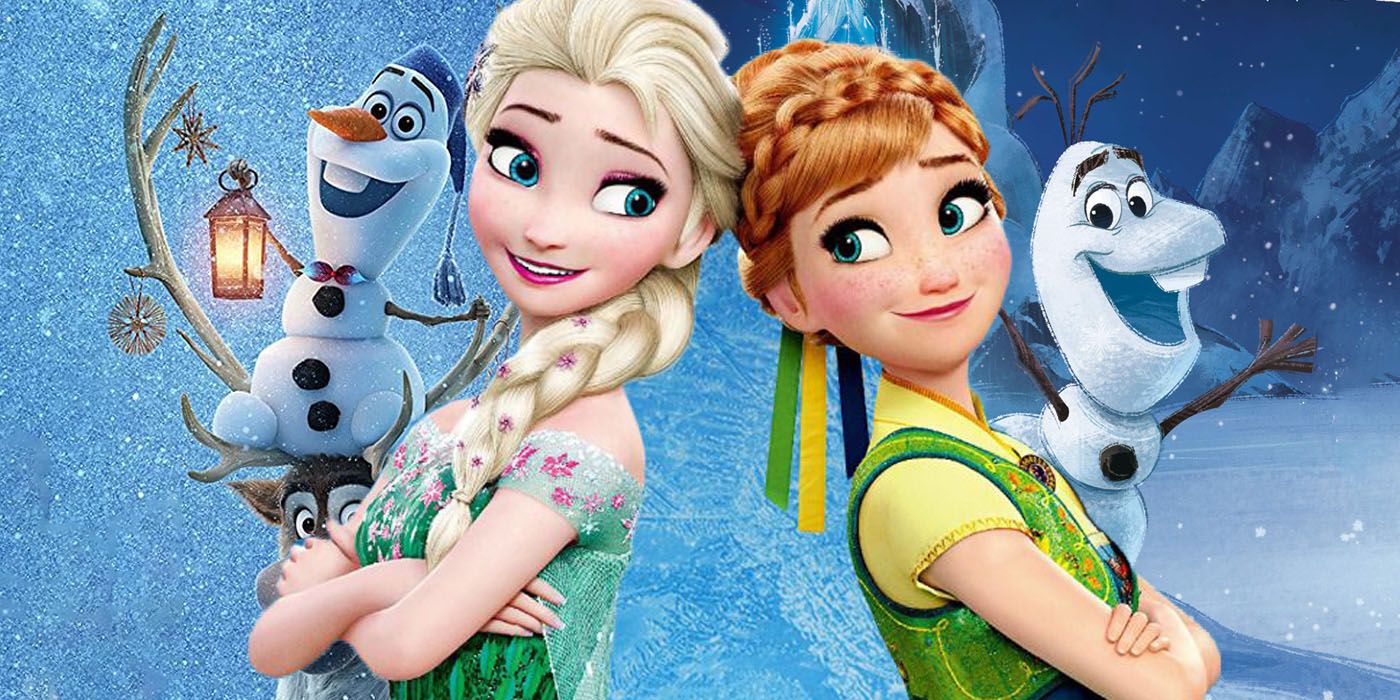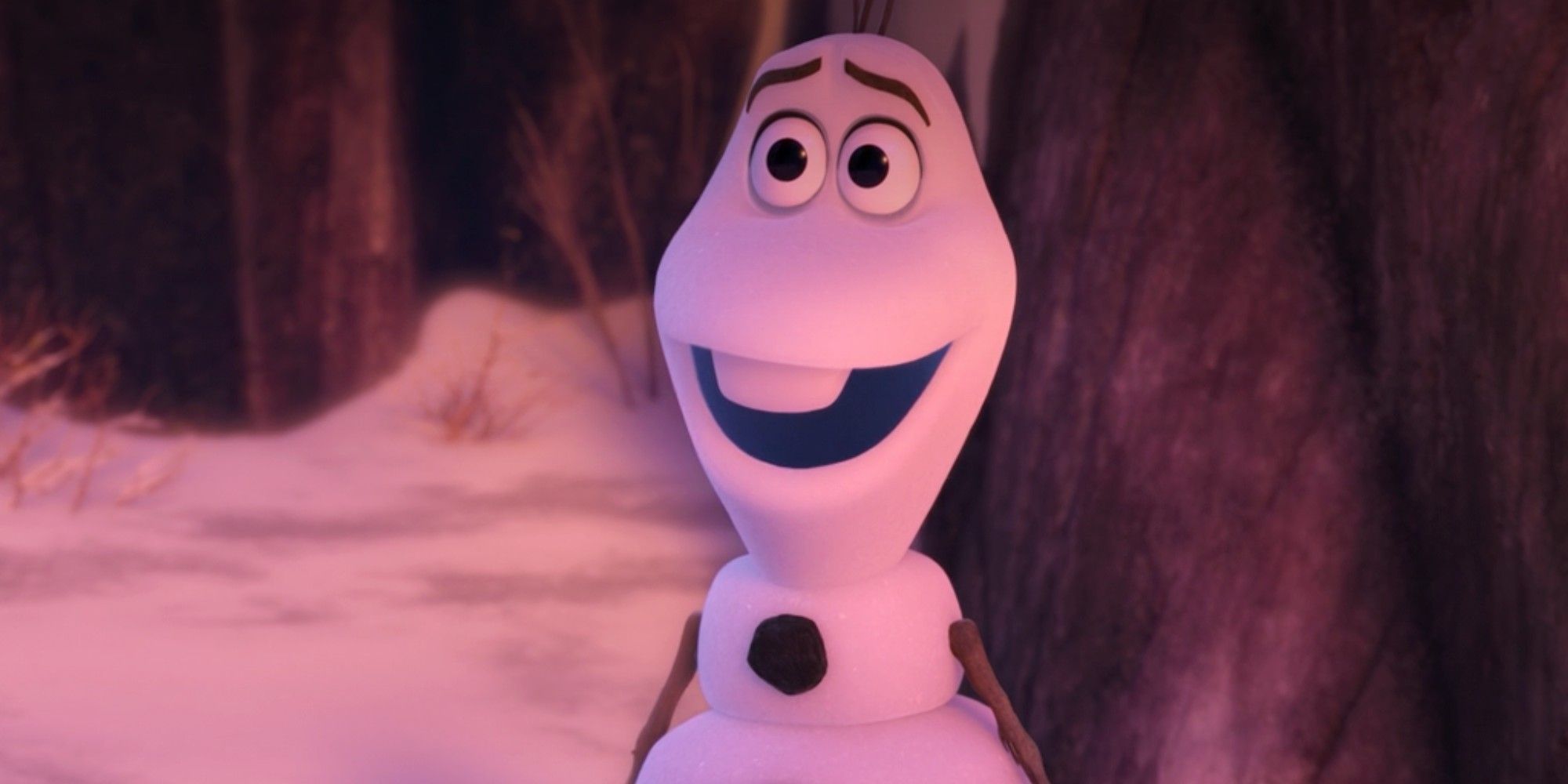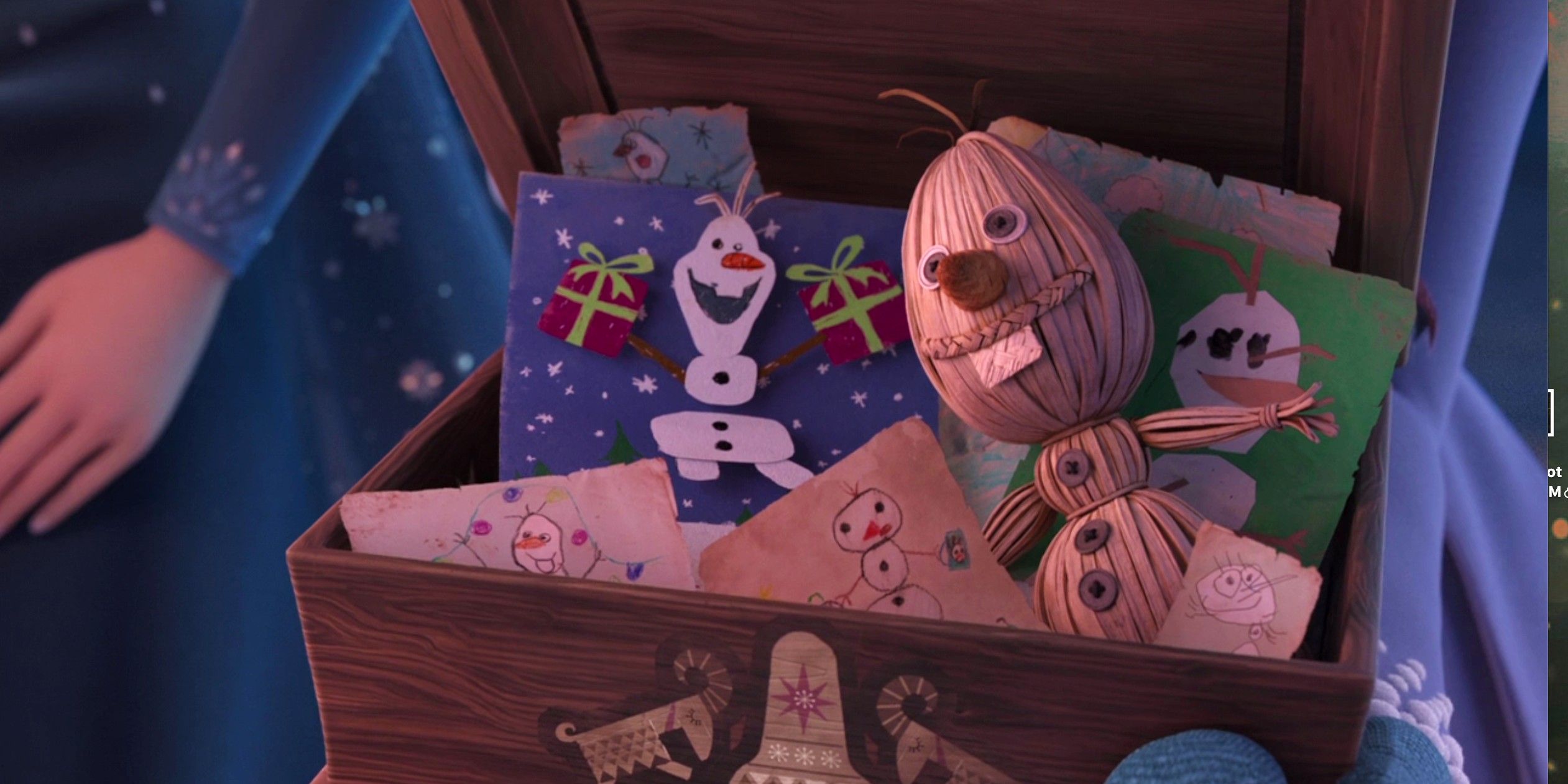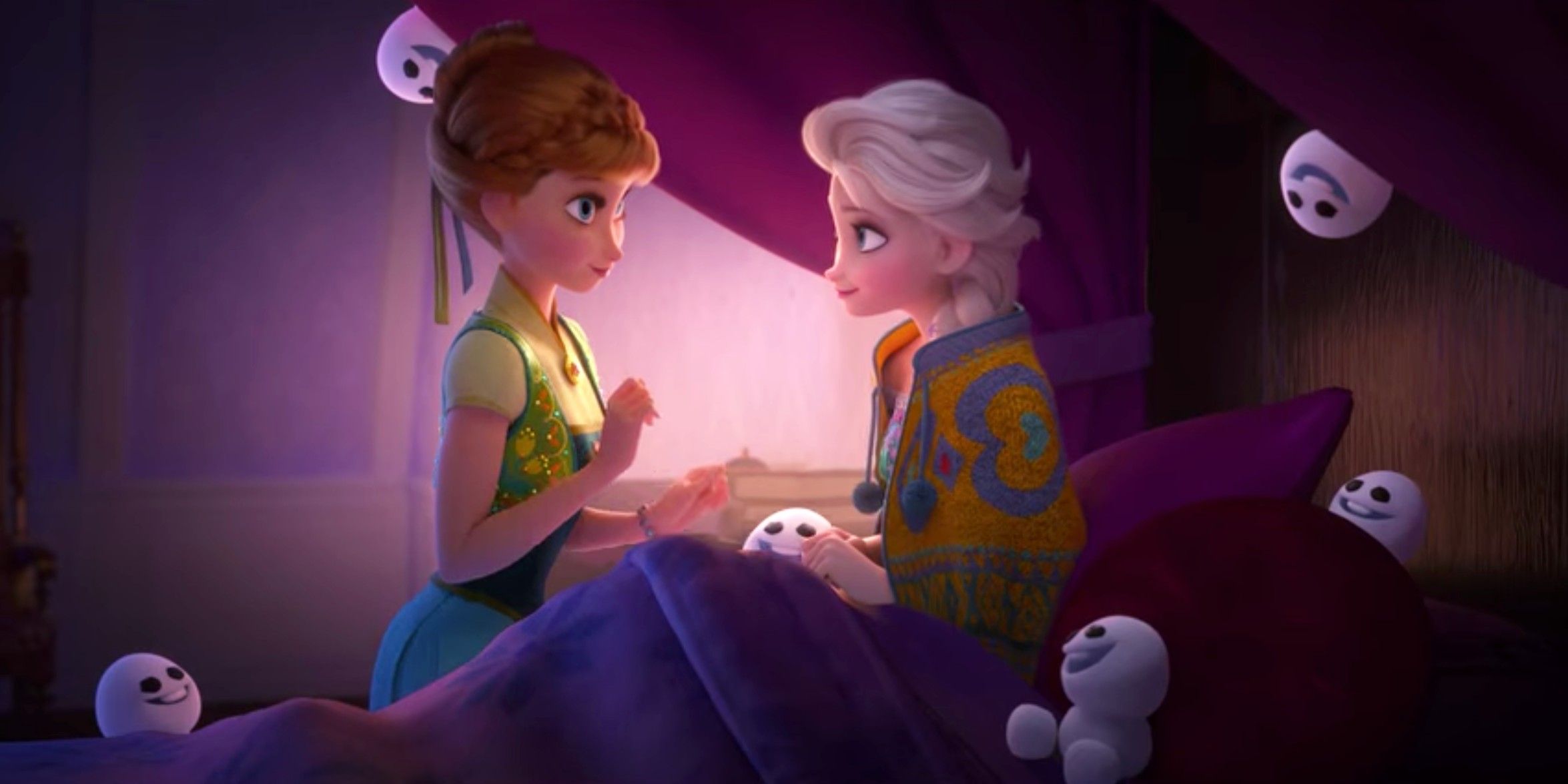
Disney's Frozen has been expanded into not just a sequel, but several short films as well. After the massive success of Frozen's release in 2013, it's no surprise that fans were eager for more tales of Anna (Kristen Bell) and Elsa (Idina Menzel). The studio quickly catered to that demand by producing two short films before the release of Frozen 2 in 2019, and another short film on Disney+ this week.
Frozen stood out from many classic Disney films in that the hero of the story isn't Prince Hans, but the Disney princesses who end up rescuing each other. After Elsa accidentally puts Anna's life in danger, she is saved by the power of true love between the sisters. With an addictive soundtrack and animation that goes above-and-beyond in creating a winter landscape, it's little that wonder that Frozen became the highest-grossing animated of all time upon its release in 2013.
The three Frozen shorts each cover different ground, creating scenes that take place after the first movie and expanding the role of one of the most popular supporting characters, living snowman Olaf (Josh Gad). The coronavirus pandemic also created an opportunity for Disney to release At Home With Olaf, a series of 21 short animated clips, which don't meet the criteria of a short film but did cater to bored audiences. In the realm of short films, animated shorts based on Frozen have endless potential. Here are all three Frozen shorts, ranked from worst to best.

Once Upon A Snowman is a delightful 8-minute romp through Olaf's origins in Frozen, but it doesn't tell a cohesive story or offer significant emotional payoff. For fans of Olaf, following his search for a nose and seeing his brushes with Anna, Elsa and Kristoff (Jonathan Groff) is reward enough. But for audiences looking for a Frozen-esque story of sisterhood, Disney's other shorts have a lot more to offer.
Once Upon A Snowman is essentially an Olaf character study, answering a variety of questions about who he is and how he came to be. One of the biggest reveals is about how Olaf came to love summer, justifying his 2-minute song in the first film. Olaf's encounter with the Norwegian Oaken leaves him with a new passion and continuing his search for the perfect nose.
The short also takes the audience on a behind-the-scenes tour of the first film, showing what happened to Olaf between his creation and his encounter with Anna and Kristoff in their journey up the mountain. The peek offstage is a fun look at what happens in the film away from the main action, but doesn't have a strong narrative. Olaf's search for identity is interrupted by cameos from crowd favorites, replays of the best moments in the first film and meta jokes. It's connected by spontaneous mishaps and gags, giving the entire piece an uneven feel with few smooth transitions.
The short also doesn't present anything new in terms of music or animation, retreading groundwork laid in the first Frozen film. The highlight of Olaf's journey is his search for existential truth. His reaction upon being created is a series of questions everyone has at some point or another — why am I here? What does it all mean? His search ends when he remembers his connection to Anna and Elsa and finds meaning in family and love, voicing his iconic line for the first time — "I'm Olaf and I like warm hugs."

Olaf's Frozen Adventure is a dazzling display of new animation and musical numbers, but its 25-minute length and multiple storylines make it a little too busy to be named number one. Set during the first Christmas since the gates of Arendelle were reopened by Anna and Elsa, the short film explores the sisters' struggle to rediscover annual family traditions after their parents have died.
The short film does a good job juggling various storylines, bringing all the threads together in an ending that draws tears. Referencing the most renowned moment in Frozen, the sisters reveal that even as they stayed apart as children, their memories of building a snowman together (Olaf) kept them connected. The reference brings the audience back to their initial emotional reaction to "Do You Want To Build A Snowman?" and provides some closure for a tragic, unresolved moment of pain in the film.
The expansion of Olaf's role in the story is a double-edged sword, however. He plays a gratifyingly major role in the plot — uniting the sisters, helping them connect with their subjects and bringing the entire kingdom together. Olaf's earnest desire to please his friends also embodies a feeling many children have in their lives. But the focus on the snowman creates diversions from the primary story, as Olaf visits dozens of Arendellians and goes on a disastrous sleigh-ride through the woods. Even as Olaf's adventures create a visually interesting scenes, they dilute the impact of the story.
The best part of Olaf's Frozen Adventure is undoubtedly the music. "When We're Together" is a touching finale that wraps up everything addressed in the short in a neat Christmas bow. The melody and lyrics — about being with family on Christmas — stick with the audience as the credits roll.

Frozen Fever is a great example of the short film genre, using every second of its eight minutes of screen time to show a new aspect of the relationship between Anna and Elsa. The sisters' bond is the heart of Frozen (literally), but what happens after they restart their friendship? Frozen Fever shows that even after the sisters find each other again, it's not all smooth sailing. Ultimately, Frozen Fever just edges out Olaf's Frozen Adventure because of its more compact length and straightforward storyline, even answering a question about the fate of Hans.
In an attempt to reconnect with Anna, Elsa throws her a huge birthday bash complete with a multitude of presents. Elsa's effort to make everything perfect is one many women can relate to; she spends hours on each detail as if this one event could make up for past mistakes. In an unfortunate turn of events, however, Elsa catches a cold.
Elsa's endeavor to give Anna the best birthday ever prevents her from acknowledging the extent of her sickness. Elsa tries to deflect Anna's concern and keep the day about her, rather than admitting she needs to be taken care of. The short takes time to explore the bond between the sisters more deeply, setting up an immediate conflict between Elsa's desire to shower Anna with attention and her own needs. The plot of the short is perfectly contained, and includes moments of both humor and drama. Elsa's joking reference to "Let It Go" brings surprised laughter, while her surrender to Anna's care is enough to melt any heart. The day-to-day nature of the Elsa and Anna's problems also makes it easy for the audience to connect.
In addition, the short shows off new, exquisitely detailed animation, giving Anna and Elsa makeovers and putting some beautiful touches on each of Anna's presents. The appearance of the "Snowgies" with each of Elsa's sneezes embraces visual storytelling. The short's single song, "Making Today a Perfect Day," may not be something the audience leaves humming, but it's pacing and transitions between dialogue and music are spot-on.
from ScreenRant - Feed https://ift.tt/31FKccz
via IFTTT







0 comments:
Post a Comment